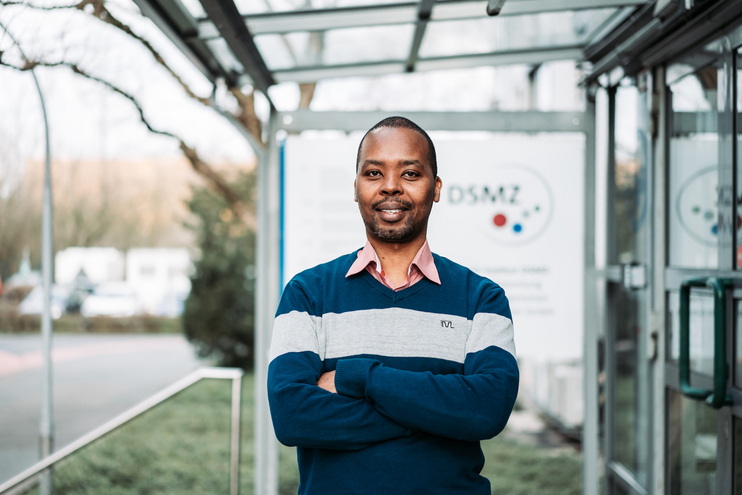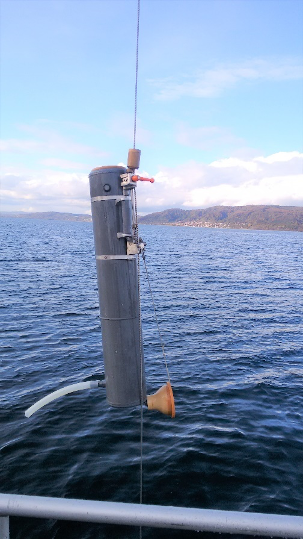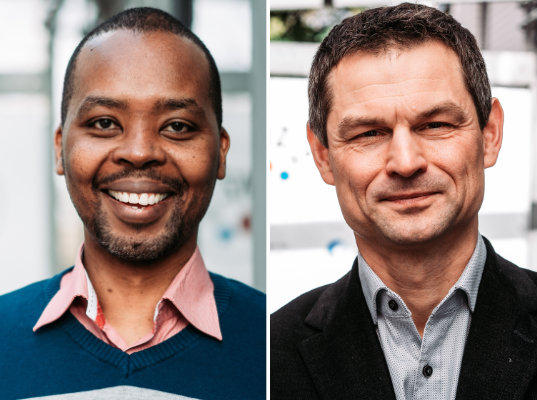An international team of researchers led by microbiologists from the Leibniz Institute DSMZ-German Collection of Microorganisms and Cell Cultures GmbH in Braunschweig, Germany, shows that in the depths of European lakes, the detoxification of ammonium is ensured by an extremely low biodiversity of archaea. The researchers recently published their findings in the prestigious international journal Science Advances. The team led by environmental microbiologists from the Leibniz Institute DSMZ has now shown that the species diversity of these archaea in lakes around the world ranges from 1 to 15 species. This is of particularly concern in the context of global biodiversity loss and the UN Biodiversity Conference held in Montreal, Canada, in December 2022. Lakes play an important role in providing freshwater for drinking, inland fisheries, and recreation. These ecosystem services would be at danger from ammonium enrichment. Ammonium is an essential component of agricultural fertilizers and contributes to its remarkable increase in environmental concentrations and the overall im-balance of the global nitrogen cycle. Nutrient-poor lakes with large water masses (such as Lake Constance and many other pre-alpine lakes) harbor enormously large populations of archaea, a unique class of microorganisms. In sediments and other low-oxygen environments, these archaea convert ammonium to nitrate, which is then converted to inert dinitrogen gas, an essential component of the air. In this way, they contribute to the detoxification of ammonium in the aquatic environment. In fact, the species predominant in European lakes is even clonal and shows low genetic microdiversity between different lakes. This low species diversity contrasts with marine ecosystems where this group of microorganisms predominates with much greater species richness, making the stability of ecosystem function provided by these nitrogen-converting archaea potentially vulnerable to environmental change.
Maintenance of drinking water quality
Although there is a lot of water on our planet, only 2.5% of it is fresh water. Since much of this fresh water is stored in glaciers and polar ice caps, only about 80% of it is even accessible to us humans. About 36% of drinking water in the European Union is obtained from surface waters. It is therefore crucial to understand how environmental processes such as microbial nitrification maintain this ecosystem service. The rate-determining phase of nitrification is the oxidation of ammonia, which prevents the accumulation of ammonium and converts it to nitrate via nitrite. In this way, ammonium is prevented from contaminating water sources and is necessary for its final conversion to the harmless dinitrogen gas. In this study, deep lakes on five different continents were investigated to assess the richness and evolutionary history of ammonia-oxidizing archaea. Organisms from marine habitats have traditionally colonized freshwater ecosystems. However, these archaea have had to make significant changes in their cell composition, possible only a few times during evolution, when they moved from marine habitats to freshwaters with much lower salt concentrations. The researchers identified this selection pressure as the major barrier to greater diversity of ammonia-oxidizing archaea colonizing freshwaters. The researchers were also able to determine when the few freshwater archaea first appeared. Ac-cording to the study, the dominant archaeal species in European lakes emerged only about 13 million years ago, which is quite consistent with the evolutionary history of the European lakes studied.
Slowed evolution of freshwater archaea
The major freshwater species in Europe changed relatively little over the 13 million years and spread almost clonally across Europe and Asia, which puzzled the researchers. Currently, there are not many examples of such an evolutionary break over such long time periods and over large intercontinental ranges. The authors suggest that the main factor slowing the rapid growth rates and associated evolutionary changes is the low temperatures (4 °C) at the bottom of the lakes studied. As a result, these archaea are restricted to a state of low genetic diversity. It is unclear how the extremely species-poor and evolutionarily static freshwater archaea will respond to changes induced by global climate warming and eutrophication of nearby agricultur-al lands, as the effects of climate change are more pronounced in freshwater than in marine habitats, which is associated with a loss of biodiversity.
Publication:
Ngugi DK, Salcher MM, Andre A-S, Ghai R., Klotz F, Chiriac M-C, Ionescu D, Büsing P, Grossart H-S, Xing P, Priscu JC, Alymkulov S, Pester M. 2022. Postglacial adaptations enabled coloniza-tion and quasi-clonal dispersal of ammonia oxidizing archaea in modern European large lakes. Science Advances doi: 10.1126/sciadv.adc9392.
Joint press release of the Leibniz-Instituts DSMZ and the Leibniz Institute of Freshwater Ecology and Inland Fisheries
Press contact:
PhDr. Sven-David Müller, Head of Public Relations, Leibniz Institute DSMZ-German Collection of Microorganisms and Cell Cultures GmbH
Phone: ++49 (0)531/2616-300
Mail: press(at)dsmz.de
About the Leibniz Institute DSMZ
The Leibniz Institute DSMZ-German Collection of Microorganisms and Cell Cultures is the world's most diverse collection of biological resources (bacteria, archaea, protists, yeasts, fungi, bacteriophages, plant viruses, genomic bacterial DNA as well as human and animal cell lines). Microorganisms and cell cultures are collected, investigated and archived at the DSMZ. As an institution of the Leibniz Association, the DSMZ with its extensive scientific services and biological resources has been a global partner for research, science and industry since 1969. The DSMZ was the first registered collection in Europe (Regulation (EU) No. 511/2014) and is certified according to the quality standard ISO 9001:2015. As a patent depository, it offers the only possibility in Germany to deposit biological material in accordance with the requirements of the Budapest Treaty. In addition to scientific services, research is the second pillar of the DSMZ. The institute, located on the Science Campus Braunschweig-Süd, accommodates more than 82,000 cultures and biomaterials and has around 200 employees. www.dsmz.de
The Leibniz Association
The Leibniz Association connects 97 independent research institutions that range in focus from the natural, engineering and environmental sciences via economics, spatial and social sciences to the humanities. Leibniz Institutes address issues of social, economic and ecological relevance. They conduct knowledge-driven and applied basic research, maintain scientific infrastructure and provide research-based services. The Leibniz Association identifies focus areas for knowledge transfer to policy-makers, academia, business and the public.
Leibniz institutions collaborate intensively with universities – including in the form of “Leibniz ScienceCampi” – as well as with industry and other partners at home and abroad. They are subject to a transparent, independent evaluation. Because of their importance for the country as a whole, the Leibniz Association Institutes are funded jointly by Germany’s central and regional governments. The Leibniz Institutes employ around 20,500 people, including 11,500 researchers. The financial volume amounts to 2 billion euros. www.leibniz-gemeinschaft.de
If you no longer wish to receive our press releases, please inform us at press(at)dsmz.de.




